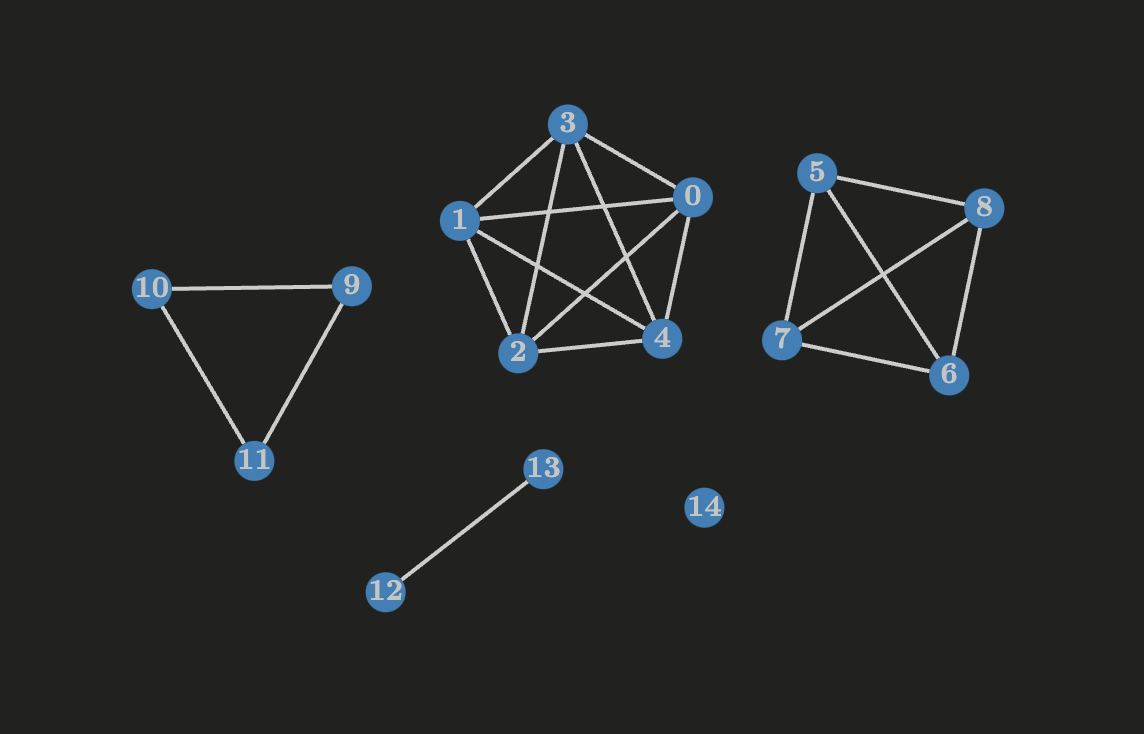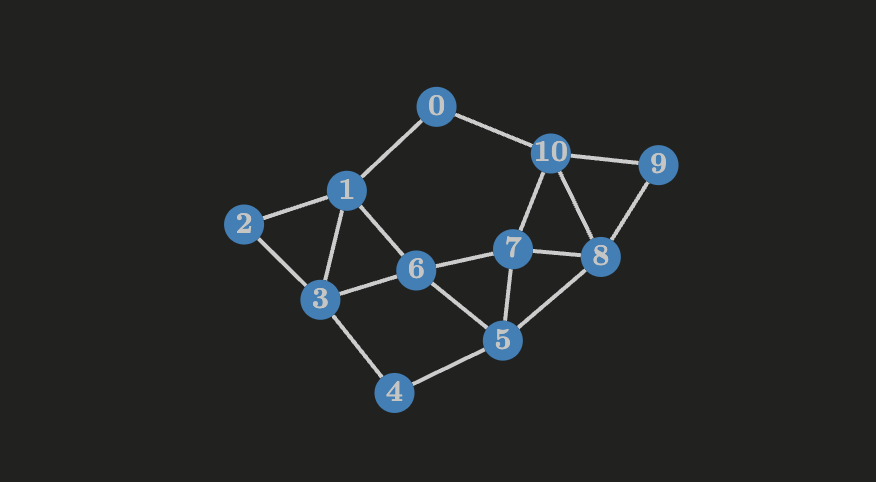Breadth First Search (BFS)
Given a graph
vector<int> dist;
vector<int> parent;
/**
* Traverses a graph `G` of order `n` and size `m` by breadth
*
* Time complexity: O(n + m)
* Space complexity: O(n)
*
* @param {vector<vector<int> >} g The adjacency list representation
* of a graph
* @param {int} source The source vertex
*/
void bfs(vector<vector<int> > &g, int source) {
int n = g.size();
dist.assign(n, -1);
parent.assign(n, -1);
queue<int> remaining;
dist[source] = 0;
remaining.push(source);
while (!remaining.empty()) {
int current = remaining.front();
remaining.pop();
for (int i = 0; i < g[current].size(); i += 1) {
int next = g[current][i];
if (dist[next] == -1) {
dist[next] = dist[current] + 1;
parent[next] = current;
remaining.push(next);
}
}
}
}
Depth First Search (DFS)
Given a graph
Whenever a vertex
During the process of creation of the dfs tree the algorithm can also define timestamps on each vertex (an integer denoting the time an action happened)
Properties
- the number of descendent of any vertex
- for any two vertices
- if the interval
- if the interval
- if the interval
Classification of edges
We can define four edge types produced by a DFS on
- Tree edges, an edge
- Back edges, an edge
- Forward edges, an edge
- Cross edges, all the other edges, e.g. an edge between branches in the dfs tree
We can identify these edges with an additional state stored in the vertices of the graph during the dfs tree process, the additional state will be
During the analysis of an edge we can take a look at the color of the adjacent vertex to determine the type of edge, given the edge
- if
- if
- if
Another way to determine the type of edge is by analyzing the states
- if
- if
- if
- if
Additional properties of the edges
- if
- a directed graph
int time_spent = 0;
// the adjacency list of `G`
vector<vector<int> > g;
// the explored state of a vertex `i`
vector<bool> visited;
// the predecesor of a vertex `i` in the dfs tree
vector<bool> predecessor;
// the time a vertex `i` was discovered first
vector<int> time_in;
// the time a vertex `i` spent exploring each reachable non-visited vertices
vector<int> time_out;
/**
* Traverses a graph `G` of order `n` and size `m` by depth,
* it's assumed that `time_in`, `time_out`, `visited`, `predecessor`
* are initialized correctly with a size equal to `n`
*
* Time complexity: O(n + m)
* Space complexity: O(n)
*
* @param {int} v The current vertex being analyzed
*/
void dfs(int v) {
visited[v] = true;
time_in[v] = ++time_spent;
for (int i = 0; i < g[v].size(); i += 1) {
int next = g[v][i];
// edge analysis
if (!time_in[next]) {
// edge (v, next) is a tree edge
} else if (!time_out[next]) {
// edge (v, next) is a back edge
} else if (time_in[v] < time_in[next]) {
// edge (v, next) is a forward edge
} else {
// edge (v, next) is a forward edge
}
// traversal to adjacent vertices
if (!visited[next]) {
predecessor[next] = v;
dfs(next);
}
}
time_out[v] = ++time_spent;
}



